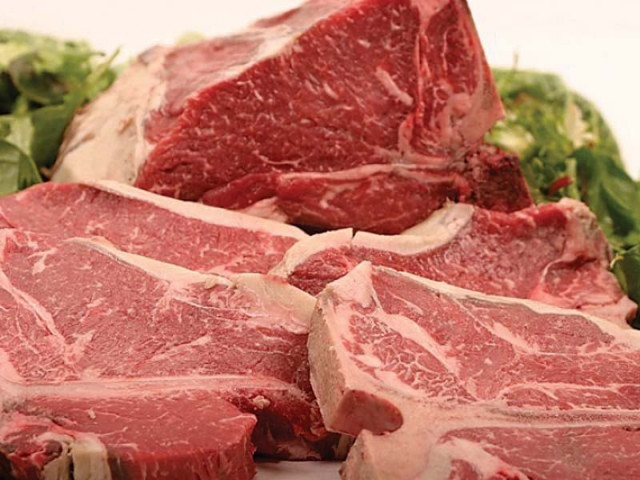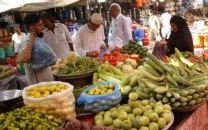China’s market meaty, even without Pakistani beef
Finds way via Vietnam, missing game in world’s biggest market

Pakistan needs to obtain more tariff concessions (on meat exports) in its ongoing FTA negotiations. PHOTO: FILE
China has emerged as the largest meat importer in the world. Rising living standards and decreasing arable area are some of the contributing factors to the burgeoning demand.
Is it really beef that India exports?
Australia, New Zealand, Uruguay, Argentina and Brazil are some of the major suppliers of beef and mutton to China. Even India is going to enter the list, as Chinese authorities are in the process of inspecting Indian abattoirs for approving them for meat exports.
Now, the million-dollar question is where is Pakistan in all this? Despite all talk of deep friendship and the China-Pakistan Economic Corridor, there seems to be no initiative to start the meat approval process with Chinese authorities.
As Pakistani meat industry is coming of age lately, it has almost doubled exports in the last five years to $215 million. Can we enter the missing Chinese market? Let’s probe a bit deeper.
With some research and background interviews, some interesting facts have come to light. Indeed, Pakistan is supplying beef to China, not directly but through the indirect route of Vietnam. Owing to stringent Chinese quarantine standards and registration processes, a larger grey market for foreign meat has risen in China.
Vietnam and Hong Kong have emerged as the main meat smuggling routes to mainland China. In June this year, Chinese authorities seized over 100,000 tons of smuggled meat in a country-wide crackdown in 14 cities.
Vietnam has become the largest destination for Pakistani as well as Indian frozen beef. Chinese buyers are directly buying beef from the two countries destined for ports in Vietnam. After offloading in Vietnam, the meat is smuggled through the neighbouring Chinese province of Guangxi.
Drawbacks of indirect route
Lower prices and uneven order placements are some of the disadvantages of this indirect route for Pakistani meat exporters. Average price of imported meat in China is rising. It reflects both inflationary trends and preference for quality meat by Chinese consumers.
Pakistan is missing the game in the largest meat market of the world. Instead of blame game, we need to put our act together to strategise our entry into the Chinese market. Major stakeholders are the Ministry of National Food Security and Research, Pakistan Meat Processors Association and Pakistani embassy in China. Their joint efforts will clear the path for meat exports to the mainland.
The road map ahead is two-fold. First part comprises the signing of a protocol with the Chinese government for meat exports. It is followed by inspection of meat processing facilities by AQSIQ (General Administration of Quality Supervision, Inspection & Quarantine).
Pakistan has already signed similar protocols with China for rice, mangoes and citrus. However, the process for meat exports will be a bit more tedious owing to sensitivities of the Chinese government over food safety.
Tariff relief
Pakistan does have tariff concessions on meat exports in its free trade agreement (FTA) with China. In the absence of market access, they are of no use. Besides initiating the market access process, Pakistan needs to obtain more tariff concessions in its ongoing negotiations for the second phase of FTA.
This becomes all the more important in the light of chronic deficit Pakistan is facing in trade with China. Despite signing the FTA many years ago, we are unable to diversify exports much with the friendly neighbour.
Kashmir lawmaker humiliated for beef ban opposition
Indeed, meat offers one such opportunity. Pakistan needs to focus on its competitive advantage vis-à-vis China. It does enjoy certain on the agro side. It has already seen the non-basmati rice gaining some foothold in the Chinese market against Thai and Vietnamese rice.
In recent years, China has emerged as a net food importer. Its buying trend is moving international food prices. We need to keep a keen eye on these rising opportunities.
The world is moving fast and China is moving a bit faster. Pakistan needs to cash in on its goodwill with China in the form of more market access and tariff concessions. The rising trade may create a bigger space for Chinese investment in Pakistan. And probability of this rises with diversification in the export base.
The writer is an entrepreneur based in China
Published in The Express Tribune, December 7th, 2015.
Like Business on Facebook, follow @TribuneBiz on Twitter to stay informed and join in the conversation.



















COMMENTS
Comments are moderated and generally will be posted if they are on-topic and not abusive.
For more information, please see our Comments FAQ